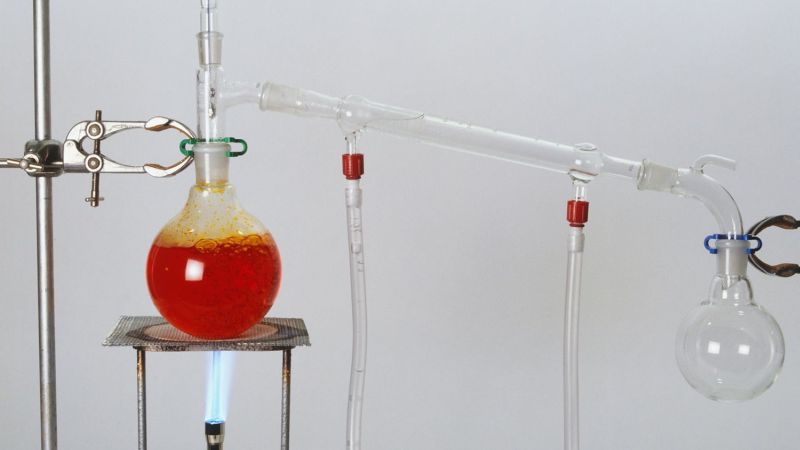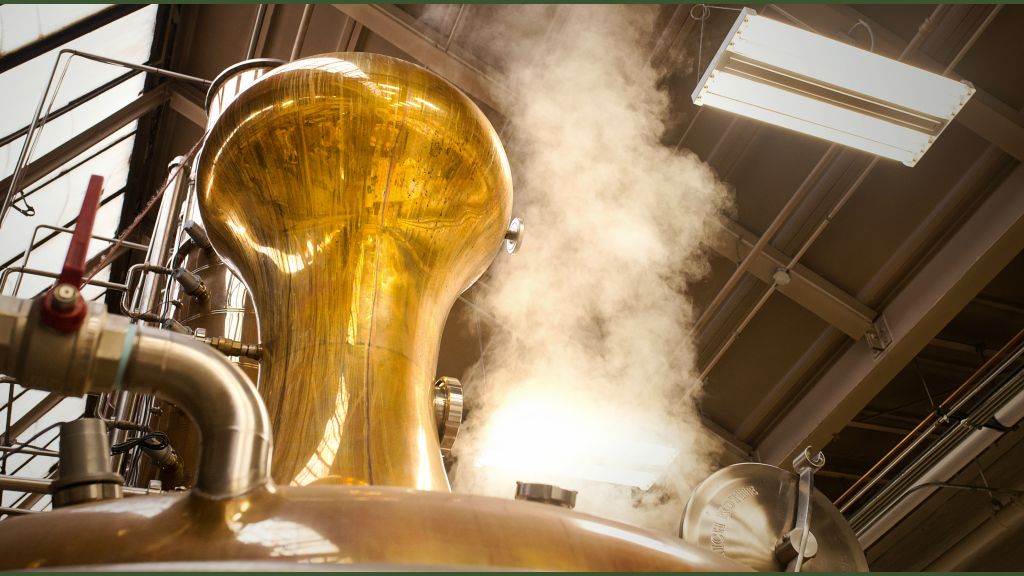Distillation is a time-honored process used to create exquisite hard liquors such as vodka, brandy, and whisky. Dating back to at least the 13th century, distillation has captivated connoisseurs with its ability to produce flavorful spirits. However, it is important to recognize the potential dangers associated with distillation, both during the process and when consuming the final product. In this article, we will delve into the risks and precautions that must be taken to ensure a safe and enjoyable distillation experience.
Distillation: The Craft of Spirit Creation
Distillation is a meticulous process that involves heating a fermented liquid to separate alcohol from impurities, resulting in a purer and more concentrated form of spirits. This technique has been refined over centuries to produce iconic drinks like vodka, brandy, and whisky. Through the careful application of heat and condensation, distillers are able to extract the desired flavors and aromas, creating unique and sought-after beverages.
A Historical Practice with Modern Consequences
Distillation has an abundant that history dates back centuries. Its origins can be traced to such ancient civilizations the Arabs, Greeks, and Chinese, who discovered the process independently. Over time, distillation techniques have been perfected and passed down through generations, resulting in the wide variety of spirits we enjoy today. The evolution of distillation has also brought about new challenges and risks that must be addressed to ensure safety.
Legal Considerations: Home Distillation and the Law
While distillation has a long-standing tradition, it is essential to understand the legal landscape surrounding its practice. In most countries, distilling alcohol at home is illegal due to the potential dangers associated with the process. Governments have implemented strict regulations to control the production and sale of alcoholic beverages to ensure consumer safety. It is crucial for aspiring home distillers to familiarize themselves with local laws and regulations to avoid legal repercussions.
Balancing Knowledge and Risks in Distillation

The art of distillation requires a delicate balance between knowledge and risk management. The dangers of distillation are directly influenced by the knowledge and seriousness of the person conducting the process. Cutting corners or neglecting safety precautions can lead to catastrophic results. It is crucial to approach distillation with caution and respect for the risks involved. Education and training are essential in acquiring the necessary skills to safely engage in distillation.
Safeguarding Against Catastrophic Consequences
Distillation is not a task to be taken lightly. Cutting corners during the process can have severe consequences. It is essential to follow best practices and guidelines meticulously to ensure the safety of both the distiller and the consumers. Proper equipment, including stills, condensers, and collection vessels, should be used to minimize the risk of accidents. Regular maintenance and inspections of the equipment are crucial to detect any potential issues and address them promptly.
Hidden Dangers Lurking in the Process
Distillation poses risks during both the consumption of the final product and the distillation process itself. The use of improper materials, mishandling of equipment, or inadequate removal of toxic substances can lead to dangerous outcomes. For example, the heads of the distillate can contain methanol, a highly toxic substance that can cause permanent blindness and even death if ingested in small quantities. A comprehensive understanding of the risks involved is necessary to mitigate potential hazards.
Saving Money vs. Compromising Safety
In an attempt to save money, some individuals may be tempted to distill alcohol at home. However, this can lead to potential dangers. Without proper knowledge and equipment, the risks associated with home distillation outweigh any perceived benefits. It is crucial to prioritize safety over cost-saving measures. Investing in high-quality equipment, sourcing appropriate ingredients, and adhering to established protocols can help ensure a safe distillation process.
Methanol: A Silent and Deadly Threat

One of the most significant risks associated with distillation is the presence of methanol. Methanol is highly toxic and can have severe health consequences if consumed. The heads of the distillate, which contain higher concentrations of methanol, should be carefully separated from the desired spirits. Proper removal of methanol during the distillation process is of utmost importance to eliminate its potential harm.
Recognizing the Methanol Menace
Methanol can occur naturally during fermentation, but it is typically only prevalent when fermenting leaves and stems. Understanding its potential sources and taking necessary precautions can help prevent its presence in the final product, ensuring the safety of consumers. Proper monitoring of fermentation processes and selecting appropriate raw materials can minimize the risk of methanol contamination.
Beyond the Eyes: The Dangers of Methanol
Methanol is not only dangerous when ingested but also when inhaled. It can cause damage to the nervous system and lead to various health complications. Strict adherence to safety measures is crucial to avoid exposure to this hazardous substance. Proper ventilation in the distillation area is essential to prevent the accumulation of methanol vapors, reducing the risk of inhalation.
Materials Matter: Avoiding Toxic Leaching
Another potential danger in distillation is the leaching of toxins from materials used in the process. Certain plastics, such as PVC, can release harmful substances when exposed to alcohol. It is recommended to use inert materials like copper, stainless steel, and glass during distillation to prevent the introduction of toxins into the final product. If plastic must be used, it is important to choose non-toxic plastics like Polypropylene or PTFE (Teflon).
Checking the Legal Status: Avoiding Legal Issues
Distilling alcohol is either illegal or heavily restricted in most parts of the world. The legal status of alcohol distillation varies from country to country and even within different states or regions. It is essential to thoroughly research and understand the legal requirements and restrictions related to distillation in your specific jurisdiction. Ignorance of the law is not a valid defense, so checking the legal status is crucial to avoid legal issues.
Alcohol Poisoning: A Looming Concern

Alcohol poisoning is a significant concern, with over 95,000 deaths attributed to it in the United States alone. When consuming homemade spirits, there is a risk of dangerously high alcohol content. Home distillers may fail to accurately measure the alcohol content of their liquor, leading to dangerous levels of alcohol consumption. Accurate measurement of alcohol content is vital to prevent alcohol poisoning and ensure the well-being of individuals consuming the distilled spirits.
The Fire Within: Highly Flammable Alcohol
Alcohol with an ABV (alcohol by volume) of 56% or higher is highly flammable at room temperature. The vapors of high-proof alcohol can build up within a container and explosively ignite with a spark. Therefore, it is essential to handle and store alcohol with care, keeping it away from heat sources, ignition sources, and open flames. Proper storage and handling can reduce the risk of fire-related accidents.
Ensuring Electrical Safety during Distillation
Distillation processes often involve the use of electrical components, which can pose additional risks. Electrical connections must stay dry, and precautions should be taken to prevent electrocution. Any circuit powering the still should be protected by a Residual Current Device (RCD), Residual Current Breaker with Overcurrent protection (RCBO), or Ground Fault Circuit Interrupter (GFCI). Slight leaks of alcohol vapor can increase the risk of electrical shock, making proper ventilation crucial for dissipating the vapors and reducing the risk of electrical accidents.
Ventilation: Clearing the Air

Proper ventilation is crucial in distillation areas to prevent the build-up of alcohol vapors. Alcohol vapors can be flammable and pose a risk of electrical shock if concentrated. Adequate airflow helps to disperse the vapors, reducing the chances of accidents. It is important to ensure that the distillation area is well-ventilated, allowing for the safe release of alcohol vapors.
Avoiding Explosions: Pressure and Ignition Sources
Distillation itself can be dangerous, as hot alcohol vapors are present near electrical components or open flames. Pressure build-up and ignition sources can cause explosions during distillation. To minimize the risk of explosions, frequent checkups should be conducted to identify any leaks in the distillation apparatus. Distillation columns should never be completely sealed to avoid pressure build-up. Using electricity instead of an open flame can reduce the chances of an explosion during distillation.
Embracing Safety and Mastery in the Art of Distillation
Distillation is an intricate craft that requires careful attention to detail and a deep understanding of the associated risks. From the potential dangers of methanol to the risks of electrical hazards and explosions, it is vital to prioritize safety at every stage of the distillation process. By employing proper techniques, using inert materials, and adhering to legal regulations, distillers can create spirits that are not only delightful but also safe to consume. Always remember that knowledge, experience, and precautions are the key ingredients for a successful and secure distillation journey.

